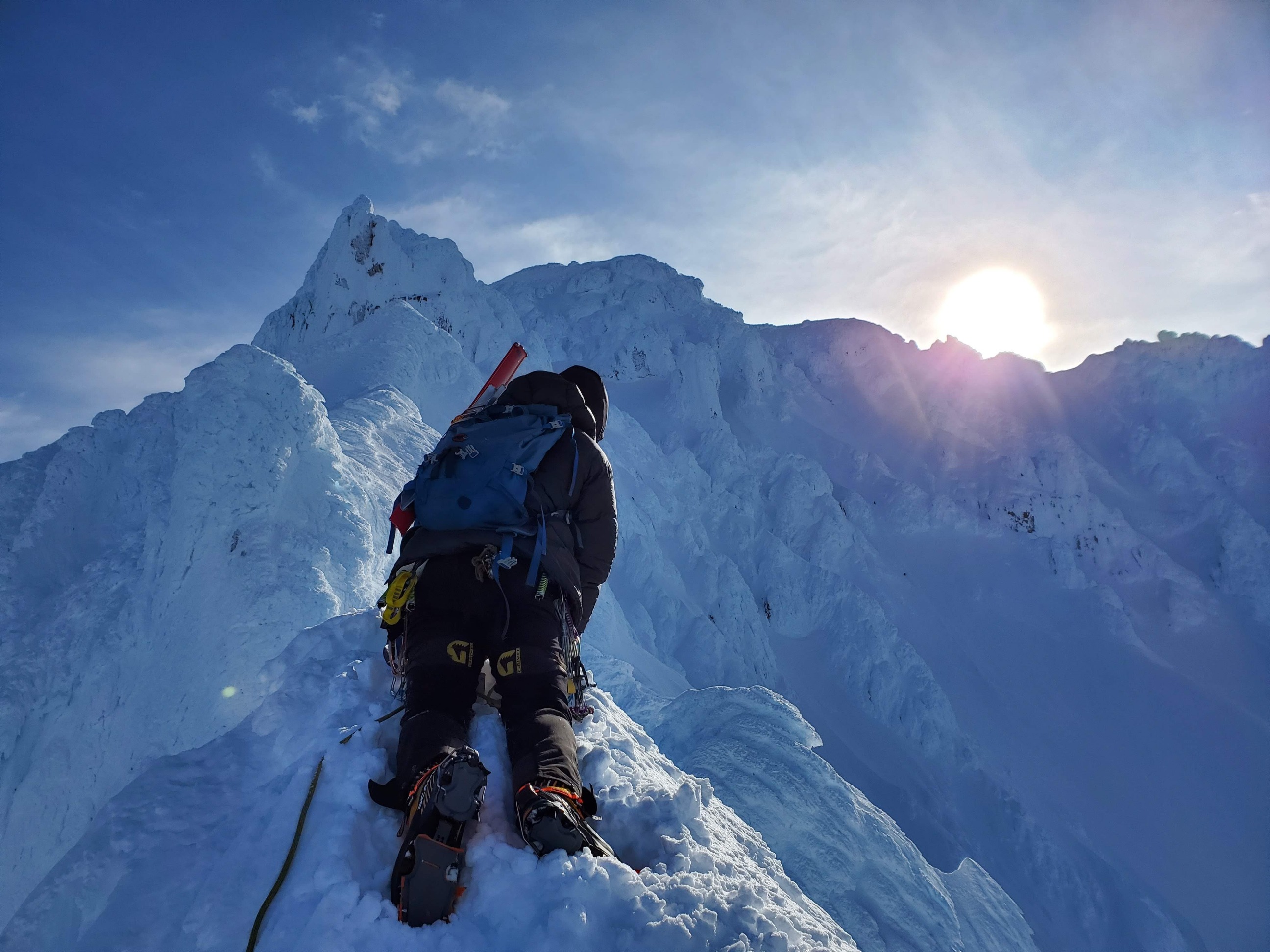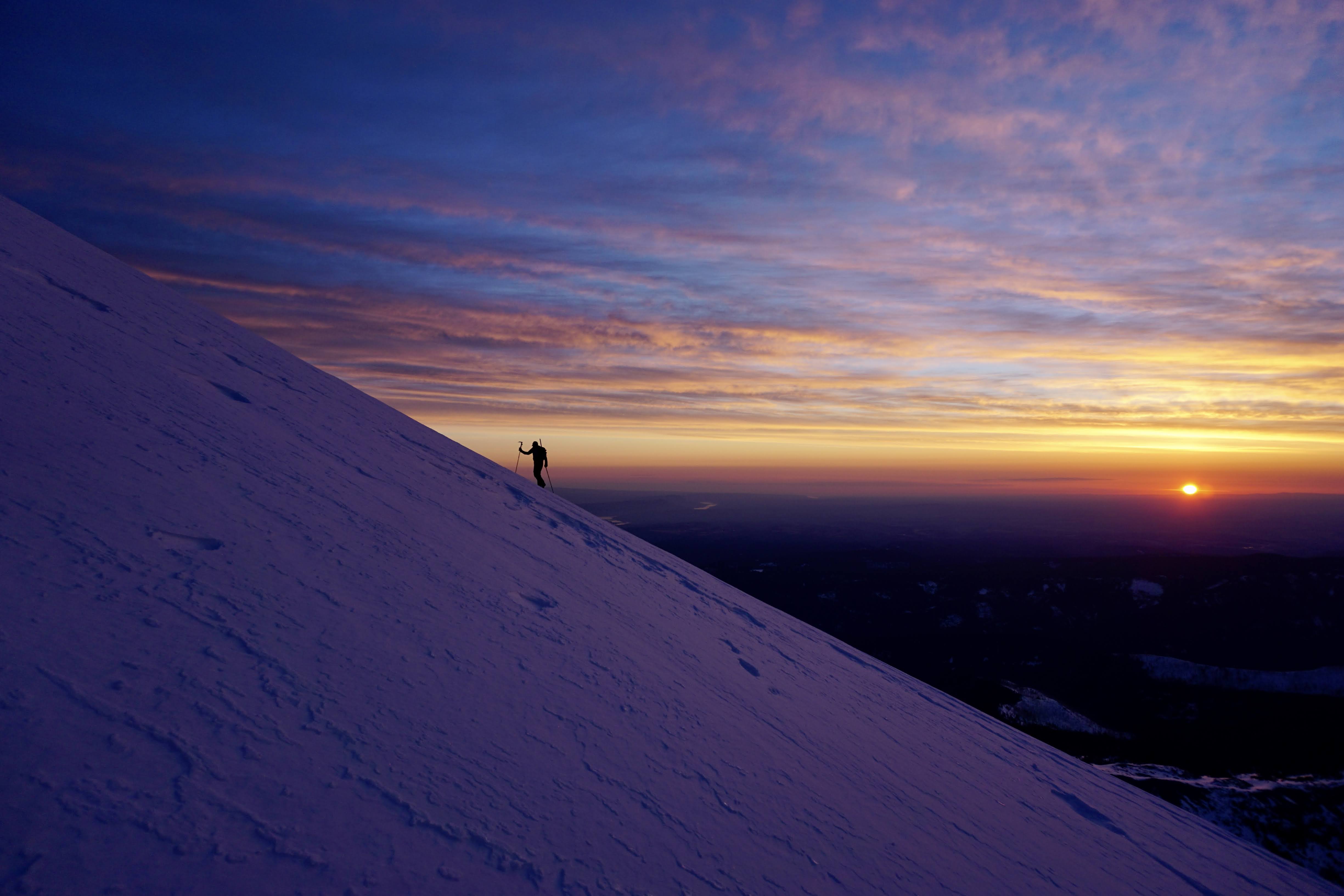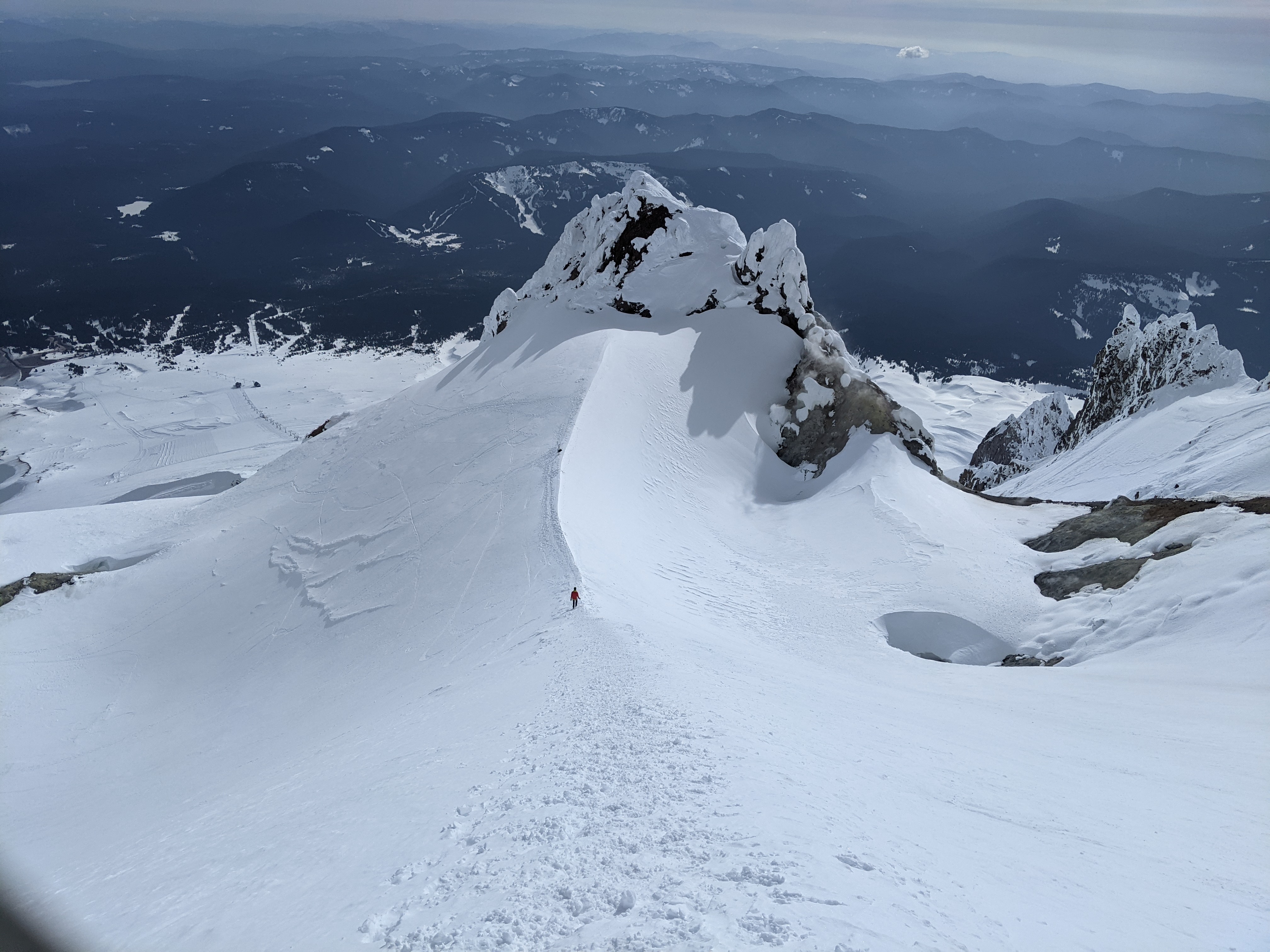It's officially mountaineering season and we're excited to get everyone geared up to head up our favorite local mountain! Climbing Mt Hood offers its own set of challenges and rewards. Whether you're an experienced mountaineer or looking to embark on your first summit, having the right gear is essential to ensure your safety and comfort. In this article, we will discuss the necessary gear for a single-day climb of Mt Hood, but this can also be applied to any non-glaciated peak in the Pacific Northwest.
The gear listed in this article serves as a starting point and should be adapted to your personal preferences and specific climb. Remember, this list is not exhaustive and is not meant to replace professional instruction and experience.

Climbing Gear:
1. Ice Axe: A solid, lightweight ice axe designed for general mountaineering is critical for a successful climb. My personal favorites are the Camp Corsa Nanotech, or the Petzl Summit.
2. Crampons: Crampons provide traction on snow and ice, and are absolutely necessary for a Mt Hood climb. Microspikes are not adequate. My personal favorites are the Petzl Irvis Hybrid crampons, but the Blue Ice Harfang Alpine or Grivel G12 would also be excellent choices.
3. Helmet: A helmet provides head protection from falling ice and rocks, and is absolutely critical. I use the Petzl Sirocco because it’s crazy lightweight, while still being surprisingly durable.
4. Ice Tool: An ice tool is great to have when things start getting steeper through the Pearly Gates. I use the Grivel North Machine Carbon, but the Petzl Sum’tec is the most popular option.
5. Mountaineering Boots: Not really in my pack, but it’s critical to have a good pair of mountaineering boots to climb Mt Hood. Hiking boots and shoes don’t provide the level of warmth, waterproofness, structure or most importantly security that mountaineering boots do. Hiking boots are simply not an option.
Personal Gear:
1. Food: Fueling your body during the climb is crucial. Pack energy-rich snacks such as Clif Bloks, Stinger Waffles, and Sesame Snaps to sustain your energy levels throughout the day.
2. Water: Staying hydrated is essential. I carry at least 1 liter of water, and increase the quantity to 2-3 liters if the weather is hot or if I anticipate a slower pace. That’s what works for me, most folks tend to carry 2-4L.
3. Sunscreen and Lip Balm: Protect your skin from the sun's harmful rays with a small tube of high SPF sunscreen. Additionally, use lip balm with SPF to prevent chapped lips.
4. Glasses: Glacier glasses will shield your eyes from the intense glare of the sun on snow and ice. They offer crucial eye protection in high alpine environments. I use Julbo Shield glasses, and they’ve served me well for a few years now.
5. Cat Crap: Cat Crap is an anti-fog treatment for eyewear. Apply it to your glasses or goggles to prevent fogging during the climb.
6. Ski Goggles (optional): If the weather forecast indicates the possibility of a storm, consider packing ski goggles. They provide additional protection and visibility in adverse weather conditions.
7. Headlamp: A headlamp is critical for pre-dawn starts. I prefer bringing a small, lightweight headlamp, because you don’t need it to be super bright, so there’s no sense carrying a larger one.
8. First Aid Kit: Pack a comprehensive first aid kit that includes essentials such as bandages, antiseptic wipes, adhesive tape, and pain relief medication. Consider including a bivy sack and gauze for more extensive injuries or emergencies.

(Credit: Ben McKinley)
Clothing:
1. Puffy Jacket: Depending on the temperature, choose a mid-weight or heavy puffy jacket to provide insulation during breaks or in colder conditions.
2. Puffy Pants: Puffy pants are necessary only in winter or extremely cold conditions when additional insulation for your lower body is required.
3. Gloves: Bring 1-3 pairs of gloves suitable for various conditions, including liner gloves for added warmth and dexterity, and waterproof gloves for wet conditions.
4. Balaclava: A balaclava provides full face and neck coverage, protecting you from the cold and wind at higher elevations.
Navigation:
1. InReach: The Garmin InReach device serves as both a backup navigation tool and an emergency communication device. It allows you to stay connected and request assistance if needed.
2. Phone: The main thing I use my phone for is navigation with the Caltopo app. I’ve found it to be extremely functional and easy to use, even in a whiteout. Ensure you have a fully charged phone and consider carrying a battery pack for backup.
3. Compass/Map: While not my primary navigation these days, a map and compass are definitely still good to have in the pack as a backup.
Miscellaneous:
1. Avalanche Gear: If there is a potential for avalanche terrain, it's wise to carry appropriate avalanche safety gear, including a beacon, shovel, and probe.
2. Watch: A reliable watch helps with time management, especially for estimating distances and tracking progress, as well as tracking altitude, and emergency navigation on some models.
3. Battery Pack: I like to carry a portable battery pack if I’m at all worried about my electronics running out of battery. Mostly this would be in the winter, when cold temperatures kill battery life quickly.
4. Pack: You’re going to need a pack to carry all this gear! Generally a 30-40L alpine pack from any reputable brand will work great. Backpacking packs will also work, though they tend to be less durable.
5. Trekking Poles: I like to carry at least one trekking pole for balance and stability on the lower parts of the mountain. Folding z-poles are my go-to, such as the Black Diamond Distance, for their low weight and packability.

(Credit: Jessica Joyner)
Remember, this list is meant to be a guide, and personal preferences may vary. Always assess the specific requirements of your climb and consult with experienced climbers or mountaineering guides for additional advice. Stay safe, enjoy the adventure, and embrace the beauty of the Pacific Northwest!
Watch the full rundown video here: "What's In Your Pack?" - Mountaineering Edition
Some helpful links
Want to climb Mount Hood? Here's what gear you'll need
Mt. Hood Detailed Climbing Information
So You Want to Climb Mt. Hood? A Tutorial
Mountain Shop presents: Climbing Mt Hood with PMR, The South Side Routes and More

1684357379-12608.png)